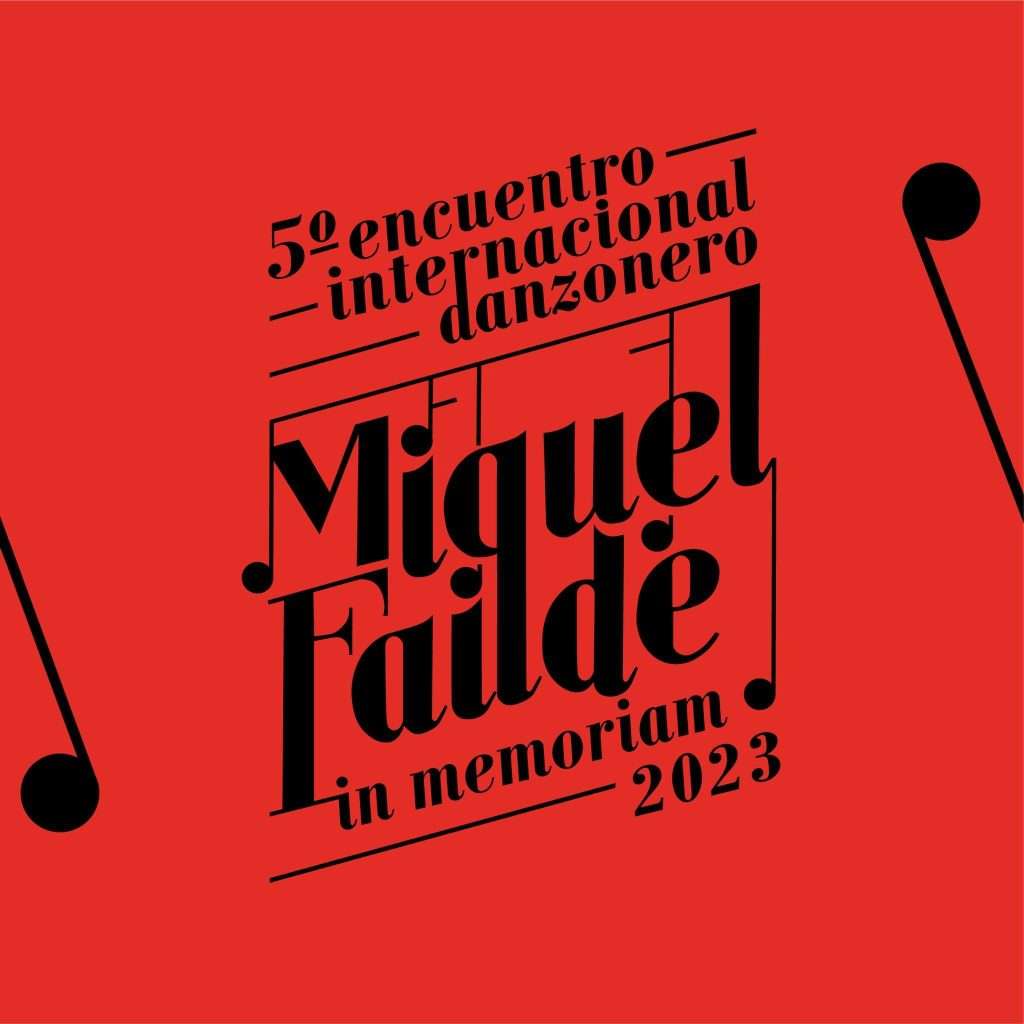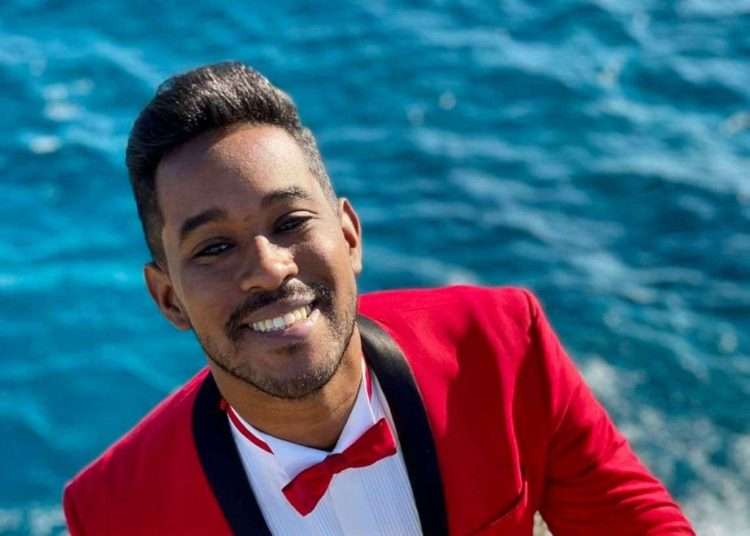As part of the commemorations for the 330th anniversary of the founding of the city of Matanzas, the 160th anniversary of the Sauto Theater, a national monument, the centenary of the birth of Richard Egües, the 45th anniversary of the creation of the system of houses of culture, and the 10th anniversary of the proclamation of the danzón as intangible heritage of the Cuban nation, the 5th Miguel Failde International Danzonero Meeting will be held between March 30 and April 30, with venues in Matanzas and Havana.
Among other events of interest, this edition opens a space for theoretical discussion, while promoting composition and dance competitions, the very heart of the meeting.
Immersed in the intense organizational tasks we find Ethiel Failde, director of the orchestra that bears his last name, which is, in turn, that of Miguel Failde, author of “Las alturas de Simpson” (1879), the first danzón of which there is news. Ethiel gives us a few minutes of his scarce time.

At the gates of the 5th Miguel Failde in Memoriam International Danzonero Meeting, what would be the main achievements in the dissemination of the danzón, our national dance? Do you think young people are beginning to feel closer to the genre?
I like to think that there are many of us doing something for the danzón, from anonymous spaces to large events. The school, the community, are the base of everything. A great concert or television program should be celebrated with the same enthusiasm as the workshop of an art instructor or a natural promoter member of the Amigos del Danzón clubs throughout Cuba, in a small school or house of culture.
In these last ten years, let’s say since the declaration of the danzón as cultural heritage of the nation, spaces such as the Danzón Habana, led by maestro Loyola, have been maintained; unpublished scores have been rescued and recorded that recover missing links in the evolution of the genre and its derivatives, such as the danzonete; new radio and television programs have appeared; even Danzoneando TV reached the select stellar segment of the channel with the highest audience in the country; new orchestras have emerged and others, such as the “typical orchestras,” have maintained their work.
As a result, the danzón continues to be played in concerts and phonograms, some of which have been nominated and awarded in competitions such as Cubadisco and the Latin Grammy. We even have new danzones, the work of Alejandro Falcón would suffice to exemplify it.
From the National School of Art, in recent years, with the emergence of the chair of popular music and the commitment of another magnificent young man, Janio Abreu, firm steps have been taken in an effort to bring this treasure to future musicians. I am especially excited to see young people and children dancing danzón, assuming that legacy.
The International Danzonero Meeting wants to be a party and a reflection of the best experiences of which we have news, mainly in Cuba and Mexico. It emerged in 2016 and has spaces not only for concerts, but also for thought, debate, dance, fashion, and musical creation.
Promoting the meeting of generations is a transversal premise for the design of each activity and each edition of the event.
For this edition’s musical composition contest, we have received some twenty works, all unpublished, from authors who continue to express their vision of the world to the rhythm of danzón, danzonete the and cha-cha.
Matanzas, its danzón community, artists and institutions, have a great responsibility to maintain the health of the danzón in all its expressions. It is not enough that we are the cradle of the genre, that has been won by history, from that elderly Failde. It is necessary to work every day to be the world capital of the danzón, something that is earned and sustained with real actions throughout the year.
Among so many anniversaries that frame the event this year, the tenth anniversary of the proclamation of the danzón as intangible cultural heritage of the Cuban nation stands out. What remains to be done to position its image internationally?
There is a long way to go, but a fundamental point that we can achieve, and I feel that it has been postponed without need, is the recognition of the danzón as a world heritage.
Since 2019, the official request has been submitted to the National Heritage Council; we collected and delivered signatures of personalities and members of the dance community in Cuba and Mexico. I have recently learned that this documentation has been lost. It is easy to conclude that no progress was made in the coordination of the process and the preparation of the file by the entity responsible for the matter.
Note that I do not include all the institutions that do for Cuban culture, because it would not be fair; we have had constant and very strong support to continue working for the danzón in other areas.
We are going to think that the pandemic played a trick on us in that sense. It is up to us in this new stage to make a greater effort and more pressure to achieve the implementation of this process. And that’s what we will do.
The son, the danzón and the bolero deserve this declaration of universal rank, and as a country we must prioritize any effort in this regard, because they are living treasures of our culture. If other nations want to join this desire, without questioning the Cuban paternity in those expressions, then they are welcome; but there is no reason to lengthen the wait. All of us who love the danzón are willing to collaborate.
What will distinguish this edition of the Meeting from the previous ones?
The main singularity of the fifth edition of the Miguel Failde in Memoriam International Meeting is that it will have a sub-venue in the capital of all Cubans, in the territory covered by the Plaza de la Revolución cultural district, during the weekends of April.
We will have actions in the neighborhoods of Matanzas and Havana, tributes to the exalted flutist Richard Egües and the delivery of the Miguel Failde Honorary Award to the Sauto Theater on its 160th anniversary and to a musical group that has performed danzón for almost a century, against all odds. The latter will be a surprise even for the orchestra that will be honored.
The inauguration of the event will be at 6 p.m. on March 30 in La Vigía, the founding square of Matanzas, with the legendary Orquesta Aragón and La Failde. The closing will be on April 30 in the Covarrubias Hall of the National Theater, in Havana, with a concert in which the danzón will dress up, embraced by the National Symphony Orchestra.
From the Matanzas chapter, which will take place from March 30 to April 2, I can highlight the staging of the Tan Musical show on Thursday the 30th at the Sauto Theater, starring the Verdarte Company; and on Saturday first, the main concert of the Danzonera La Playa, which comes from Veracruz.
As always, we will have our dance competitions for children and adults, and a luxury piano meeting with Rolando Luna and Alejandro Falcón, the date has yet to be specified.
All the information about the event program can be obtained on the social networks of the International Danzonero Meeting and the Failde Orchestra, or by writing to correofailde@atenas.cult.cu

At what point in your work is the Failde? Discography, upcoming tours…
About to celebrate its eleventh anniversary, Failde is immersed in a lot of rehearsals, mounting a new repertoire and mixing two albums, our fifth studio material and another with the live sound of the Danzoneando TV program.
We have new members, who have recently joined us. Although no one has left the orchestra for a long time due to professional problems or personal discrepancies, some have decided to settle abroad to start their life project from there.
We have assumed these changes naturally, that is how it has always been in the history of musical groups. The important thing is to be clear about the concept we defend, our identity. Whoever arrives studies it, understands and embraces it.
If someone felt like a Failde during their time in the orchestra, if they drank from the beautiful wisdom of Matanzas and Cuban music, if they deeply felt the truth with which we assume every aspect of our professional performance, then that someone will be Failde for always, no matter where they are.
The friendship is maintained, they suffer every mistake and are happy with every success of the orchestra, and they encourage those who arrive. At this stage, a new singer, two trumpets and a trombone have been incorporated. This last one is our baby, he is only 18 years old, but what a way to play!
The new album will be called Orquesta Failde: diez años caminando, and it brings very special guests, such as Omara Portuondo, our godmother; Silvio Rodríguez, Pancho Amat, Alexander Abreu and Gaby Moreno.

It goes, as always, from traditional danzón to timba, with anthological and unpublished songs, always under the EGREM, our record label, and with the mix of the great Nacho Molino and Alex Psaroudakis’s master.
On March 30, as I said, we will perform with Aragón; also on the 30th, the Tan Musical show, and then we leave for Coatzacoalcos, Veracruz, to be on April 2 at the Coatza 2023 fair along with other Cuban artists, such as Haila María Mompié, Vocalité and La Colmenita.
On our return, we will continue with the International Danzonero Meeting in its Havana stage, and in June we return to Mexico for the National Danzón Exhibition in San Luis Potosí.










